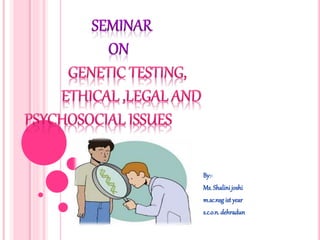This document discusses genetic testing, including its definition, purposes, types, and techniques. It addresses various types of genetic testing like prenatal, newborn, predictive, and forensic testing. Ethical, legal, and psychosocial issues related to genetic testing are also examined. Common tests discussed include ultrasound, amniocentesis, chorionic villus sampling, maternal serum screening, and fetal cell analysis from maternal blood.

















































